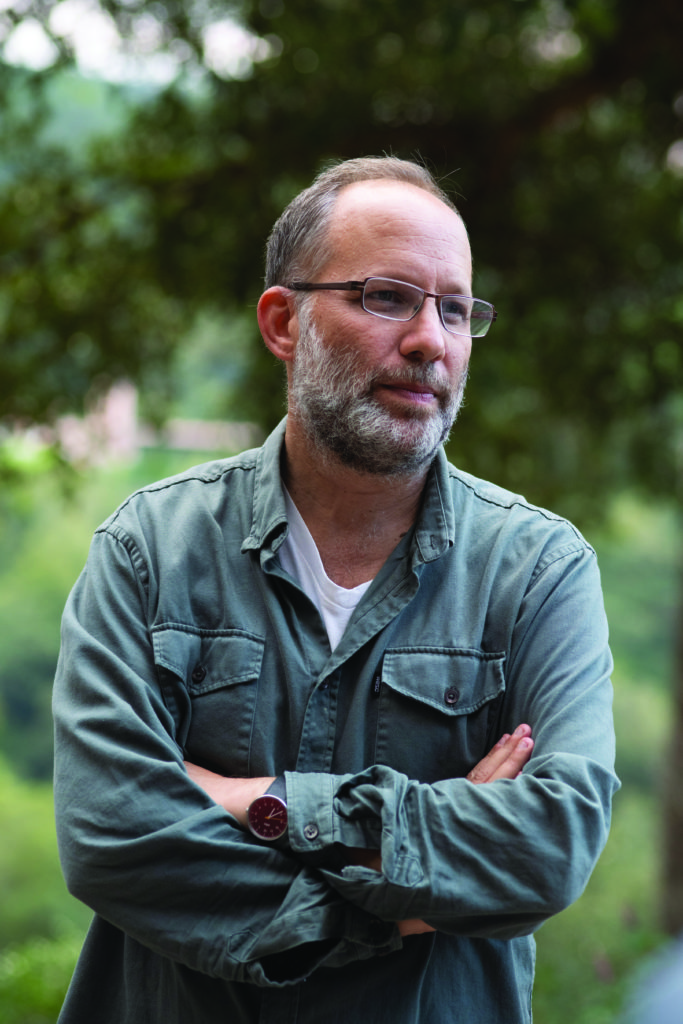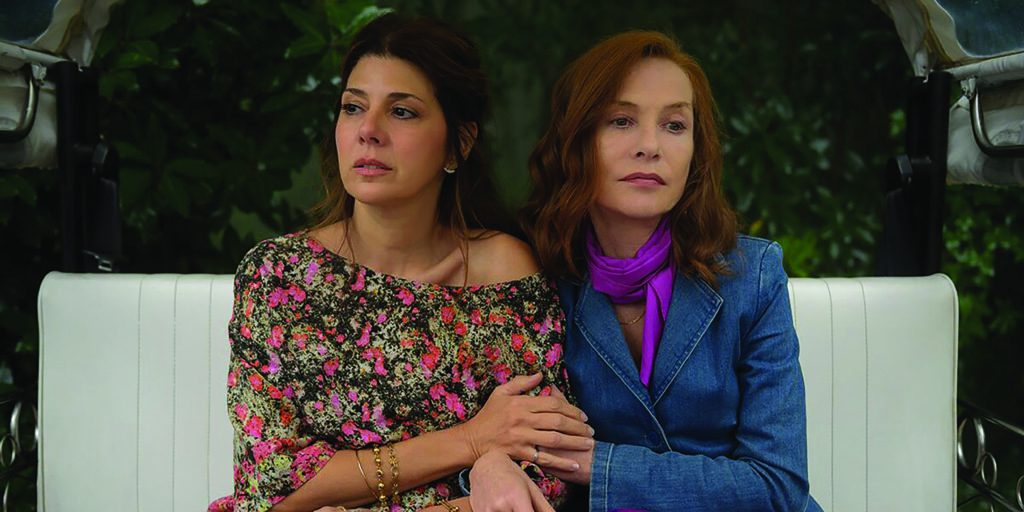
By Ray Rogers
Ray Rogers: Let’s talk Frankie. This story is so human, in all its beauty and messiness. What inspired it?
Ira Sachs: There’s a number of different things, including a viewing of a movie I saw 10 years ago: Kanchenjungha, by an Indian director named Satyajit Ray. It’s a film about a family on a vacation on a Himalayan mountaintop. It’s a really amazing film. Very, very simple, and yet I think simplicity is one of the challenges of the film—how to keep something very pristine but meaningful. It takes place in the course of one day, from morning to late afternoon, and it’s a film in which the stories of family life are in stark contrast to the power of nature. I think for me, in the past few years as a middle-aged person who has been closer to both the end of life and also illness, I’ve just been thinking a lot about those issues, and so the personal came into contact with the structural, and this movie was what was born. And it was also because I met Isabelle Huppert. I felt I couldn’t make a film with her anywhere but a place where we would both be foreign.
RR: That’s interesting. Tell me more about that thought.
IS: I didn’t have the intimacy with France and French life that would be necessary for me to direct a movie with Isabelle in France. And I felt that seeing her in a place where she is sort of displaced was something that would mirror my experience as well. So this idea of us all being on a vacation became part of the drive of the movie.
RR: And what did that do for you as a filmmaker, in the director’s role?
IS: For any film I need a certain amount of intimacy with the location so that I have enough of a relationship with that, where I can share my feelings about the place with the audience in a way that’s visceral and alive. I got that in Sintra, the town in Portugal where the film is set, by spending a lot of time there. A couple of years. And I couldn’t really make a film about Portugal, but I could make a film about the landscapes of that area.
RR: What first brought you to Portugal and to Sintra?
IS: My co-writer Mauricio Zacharias is Brazilian, but his family is from Portugal, and he recommended we consider Sintra. When he mentioned the town I remembered vaguely that I had been there—and it turns out when I was 14 I was there on a family vacation with my mother and my two sisters, and I had a diary of that experience. But in a way, because I had so few images, I felt it was a place that the audience wouldn’t go into with a preconceived notion. It’s not a movie set in Paris or Rome or Florence or Tokyo. I hope it’s OK to say this, but there’s neutrality between how people feel about Portugal, which in a way gave me an open canvas.
RR: The setting is so exquisite. I can’t wait to visit after watching your film.
IS: It is an amazing place, and we ended up writing this script specifically for very particular locations in Sintra.
RR: Meaning you knew where certain scenes would be filmed?
IS: What I did was I constructed a kind of fictional version of the place in which there are three levels: there’s the town, there’s kind of a magical forest, and then the top of a mountain. And the whole story is driven by a sense of upward motion toward the top of that mountain. That’s not exactly how Sintra is constructed, but it was fun creating a fictional reality that holds the movie together.

RR: The subject matter might be pretty difficult emotional terrain for a lot of people. We all suffer loss. Tell me more about this juxtaposition of the backdrop of the natural world with the family’s story that is unfolding in it.
IS: What I’ve realized is that every story is about contrast, including the ones that are seemingly tragic. The comic is right next to it. And for me, that was part of this film. There is a central story, which everyone is connected to, but each of the characters has a story that is very much their own, which is marriage, and potential divorce, and money and inheritance and sibling relationships. To me, the film is very much about the enormity of life. And the exquisiteness of it and the range of experience that goes into any one major moment.
RR: How important is visual beauty to you, what role does it play in your life?
IS: A large role. One of the things I thought about in the last scene of the film—which I won’t give away, but we can sort of share in its motif—is that it celebrates beauty in life. It celebrates music and nature and its enormity and theatre, because it’s a very theatrical theme. To me, there’s joy in that. So I guess everything that’s in the film, to me, is beautiful without necessarily being aesthetically so. It’s about those things that are the most intimately valuable to us.
RR: There’s a pretty inclusive vibe in the film. There are characters who are gay, who are straight, black, white. Is that a conscious decision for you to show people a wide range of the human experience here, or just happenstance?
IS: It actually reflects my own life experience. I often write about artists. I’ve written about filmmakers and actors and painters, and the family in the film certainly reflects my own familial and social experience. My husband is Ecuadorian, my kids’ mom is from Seattle, my co-writer is from Brazil, my cinematographer is from Portugal. I live in a world in which many cultures come together, and I think my films reflect that.
RR: What inspires you to tell the stories you tell? And why is storytelling so important?
IS: It’s interesting because there’s a pretty specific moment in my career where my films shifted. I would say every film before this point, which is every film before I turned 39, was about the difficulty of creating intimate relationships, and the anguish which came from the attempt to do so. That directly reflected my own experience of living. Since that point, I would say my films are much more about the struggles we have with external forces, whether it be money or nature or mortality.
RR: What do the best stories or movies do for you?
IS: They inspire me to look at the world and my own experience in the world in a different way. They ask me to stop and reflect and listen, and they ask me for empathy, and sometimes what they do is show me in harsh light what the world is. Lately I’ve been thinking a lot about Rainer Werner Fassbinder, because when I was young I was a huge fan of his work, and then at a certain point I thought it was too dark, too heavy, and too full of violence. Lately, in the age of Trump, I feel that Fassbinder knew best.
RR: Purist is devoted to all things wellness, which of course encompasses creativity and art. Is wellness a part of your life?
IS: For me, wellness comes out of transparency. And I feel until I learned how to be as straightforward about who I am and what I do and how I live and who I love, I was in sharp pain, and thus not very well. For me, following a different direction of clarity and transparency has been the best tool for me in living a fulfilled life.
Frankie shows on Oct. 13 at 8:15PM at East Hampton UA 1, and on Oct. 14 at 1:45PM at
Bay Street Theater.



